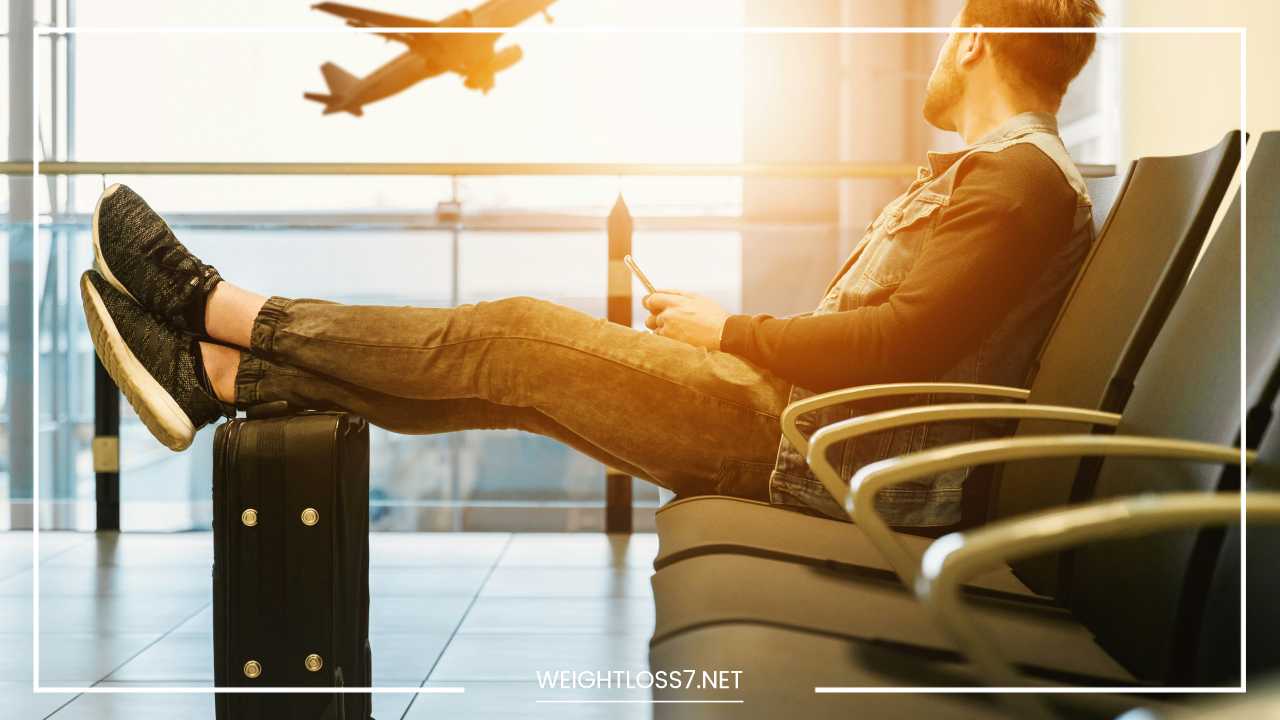Conquering Your Fear of Flying: A Guide for Travelers

Fear of Flying
Conquering the Clouds: A Comprehensive Guide to Overcoming Your Fear of Flying
The allure of distant lands, the promise of cultural immersion, the escape from the daily grind – travel beckons with a symphony of experiences.
Yet, for a significant portion of the population, the dream vacation remains grounded by a crippling fear: a fear of flying.
Statistics may tell us that airplanes are the safest mode of transportation, but for millions, anxiety transforms a journey into an ordeal.
The fear of flying, also known as aerophobia, manifests in a multitude of ways. Some experience claustrophobia in the confined airplane cabin. Others dread the lack of control during the flight. Turbulence can trigger panic attacks, and a pre-existing fear of heights can exacerbate the anxiety.
Often, the roots of this fear lie deeper. Unfamiliarity with the mechanics of flight, a past experience with turbulence, or even witnessing a plane crash (even indirectly) can plant the seeds of fear that blossom into a full-fledged phobia.
This blog post is your roadmap to overcoming this fear. We’ll delve into the reasons behind aerophobia, explore various coping mechanisms, and offer a comprehensive toolbox of strategies to help you conquer your anxieties and take to the skies with newfound confidence.
Understanding the Enemy: The Psychology of Fear
Fear, in its essence, is a primal emotion designed to keep us safe. When faced with a perceived threat, our bodies trigger a fight-or-flight response, releasing a surge of adrenaline that heightens our senses and prepares us to react.
In the context of flying, this response can be misinterpreted. The confined space, unfamiliar noises, and lack of control can all trigger the fight-or-flight response, leading to feelings of anxiety, panic, and physical discomfort.
However, it’s important to recognize the distinction between fear and danger. While the fear of flying feels real and present, the actual risk of being in a plane crash is statistically negligible.
Modern airplanes are marvels of engineering, equipped with multiple redundancies and safety measures. Pilots undergo rigorous training and adhere to strict protocols to ensure a smooth and safe journey.
Taking Charge: Strategies for Success
While the fear of flying might feel overwhelming, it’s crucial to remember that it’s not an insurmountable obstacle. Here’s a comprehensive toolbox of strategies to equip you for your fight against aerophobia:
-
Knowledge is Power: Combat fear with understanding. Educate yourself about the mechanics of flight. Learn about the incredible engineering behind airplanes, the meticulous maintenance procedures, and the rigorous training pilots undergo. Familiarize yourself with the pre-flight checks, the different parts of an airplane, and the noises you might encounter during takeoff and landing. This knowledge can replace fear with a sense of control and trust in the system. Resources like the Federal Aviation Administration (FAA) website, books on the science of flight, or documentaries like “Airport 24/7” can be immensely helpful.
-
Desensitization Techniques: Gradually expose yourself to flying experiences in a safe and controlled environment. Watch documentaries or movies about airplanes (calming ones, of course!). Take a virtual tour of a plane cabin online. Visit an airport and observe the comings and goings of airplanes – the normalcy of it all can be reassuring. Consider taking a “fear of flying” course offered by airlines or specialized programs. These courses often involve a combination of classroom learning, flight simulators, and even desensitization flights.
-
Relaxation Techniques: Deep breathing exercises, progressive muscle relaxation, and meditation are powerful tools to manage anxiety during a flight. Practice these techniques regularly in the weeks leading up to your trip and use them onboard to calm yourself during moments of panic. Consider apps like Calm or Headspace to guide you through relaxation exercises. Visualization techniques can also be helpful. Imagine yourself in a peaceful place, feeling calm and relaxed throughout the flight.
-
Cognitive Behavioral Therapy (CBT): If your fear is severe and significantly impacting your life, consider seeking professional help. CBT, a form of psychotherapy, can help you identify negative thought patterns associated with flying and replace them with more realistic and empowering ones. A therapist can equip you with coping mechanisms to manage anxiety in a healthy and constructive way. There are even therapists who specialize in treating fear of flying and can provide tailored support.
-
Embrace Control: While you can’t control everything that happens on a flight, you can take steps to feel more in control of your experience. Pack distractions – books, calming music, movies you’ve been wanting to watch, or a portable game console – to keep your mind occupied. Download podcasts or audiobooks beforehand in case of limited in-flight entertainment options. Choose a window seat if you like the feeling of being grounded by the view, or an aisle seat for easier access to the restroom (if that’s a source of anxiety).
-
Buddy Up: Flying with a supportive friend or family member can significantly reduce anxiety. Having someone to talk to and distract you can take your mind off the flight. They can also help you with relaxation techniques or simply offer a reassuring presence.
-
Communicate: Don’t be afraid to let the flight attendant know you’re a nervous flyer. They’re trained to handle anxiety and can offer support, answer your questions, and keep you informed about any turbulence. A heads-up allows them to be more attentive to your needs and provide additional reassurance.
-
Consider Medication: For some, anti-anxiety medication prescribed by a doctor can be helpful, especially for long flights. This should be discussed with a medical professional to determine if it’s the right course of action for you and to find the appropriate medication and dosage.
-
Taking Flight: Embracing the Journey: Overcoming your fear of flying is a process, and there will likely be setbacks along the way. Be patient with yourself, celebrate your victories (no matter how small), and focus on the progress you’re making. Here are some additional tips for a smoother and more enjoyable flying experience:
-
Plan Your Trip: Planning ahead can significantly reduce pre-flight stress. Avoid tight connections and red-eye flights that can disrupt your sleep schedule and add unnecessary stress. Choose a comfortable departure time that allows you to arrive at the airport relaxed and well-rested. Consider booking a direct flight if possible to avoid the anxiety of layovers.
-
Pack Smart: Pack light and bring a carry-on bag if possible. This gives you a sense of control over your belongings and eliminates the worry of lost luggage. Wear loose-fitting, comfortable clothing that allows for easy movement. Pack layers in case the cabin temperature fluctuates. Bring essentials like hand sanitizer, a water bottle, and healthy snacks to keep your energy levels up.
-
Arrive Early: Avoid the last-minute rush that can exacerbate anxiety. Give yourself ample time to check in, go through security, and board the plane without feeling rushed. Utilize airport amenities like lounges or relaxation areas to de-stress before your flight.
-
Focus on the Positive: Shift your mindset. Instead of dwelling on anxieties, focus on the excitement of your destination and the amazing experiences that await you. Think about the people you’ll see, the sights you’ll explore, and the memories you’ll create. Bring a travel journal or book about your destination to get yourself mentally prepared and excited for your trip.
The Takeaway: The World Awaits
Fear of flying doesn’t have to limit your travel dreams. With knowledge, preparation, the right coping mechanisms, and a little self-compassion, you can overcome this fear and soar through the skies with newfound confidence.
Remember, every journey begins with a single step. Take yours today and embrace the world that awaits you beyond the clouds.
Bonus Section: Additional Resources
- The Fear of Flying Association International (FOFA): https://www.fofc.com/about
- The National Institute of Mental Health (NIMH): https://www.nimh.nih.gov/health/topics/anxiety-disorders
- The Anxiety and Depression Association of America (ADAA): https://adaa.org/
These resources offer additional information, support groups, and helpful tips for managing anxiety and phobias.
Remember, you are not alone in this. Millions of people have successfully overcome their fear of flying, and you can too. With the right approach and a little determination, you can conquer your anxieties and experience the joy of travel.
Beyond the Basics: Advanced Strategies for Frequent Fliers
Once you’ve conquered the initial hurdle of taking flight, you might find yourself wanting to explore more advanced strategies to make flying an even more enjoyable experience. Here are some tips for frequent fliers:
-
Frequent Flyer Programs: Earning frequent flyer miles can add a sense of reward to your travels. These miles can be redeemed for free flights, upgrades, and other travel perks, making flying more economical and offering an incentive to overcome your fear.
-
Airport Lounges: Consider investing in a lounge membership or using credit card points for lounge access. Airport lounges offer a haven of peace and quiet away from the hustle and bustle of the terminal. They typically provide comfortable seating, complimentary food and beverages, Wi-Fi access, and even spa services at some locations.
-
Noise-Cancelling Headphones: Invest in a good pair of noise-cancelling headphones. These headphones significantly reduce engine noise and create a more peaceful environment onboard, allowing you to relax, listen to music, or focus on work without distractions.
-
Biofeedback: Biofeedback is a technique that uses sensors to monitor your body’s physiological responses like heart rate and muscle tension. By providing real-time feedback, biofeedback can help you learn to control these responses and manage anxiety during flights. There are even apps available that utilize your phone’s camera to provide basic biofeedback.
-
Exposure Therapy with a Virtual Reality Twist: While traditional exposure therapy involves gradual exposure to real-world flying experiences, virtual reality (VR) technology is offering new possibilities. VR programs can simulate different aspects of flying, allowing you to confront your anxieties in a safe and controlled environment.
-
Acupressure: Acupressure is a traditional Chinese medicine technique that involves applying pressure to specific points on the body. Some acupressure points are believed to be effective in reducing anxiety. Consider consulting a qualified acupuncturist to learn more about this technique.
Remember: Consistency is Key
The key to overcoming your fear of flying lies in consistent effort and practice. Don’t be discouraged if you experience setbacks along the way. Celebrate your victories, no matter how small, and gradually build upon your successes.
With dedication and the right tools, you can transform your fear of flying into a manageable challenge and unlock a world of travel possibilities.
Final Words: Embrace the Journey
The world is a vast and wondrous place, waiting to be explored. Don’t let fear hold you back from experiencing the rich tapestry of cultures, breathtaking landscapes, and unforgettable experiences that travel offers.
Take charge of your anxieties, equip yourself with the right strategies, and take flight towards a world of adventure. So spread your wings, breathe deeply, and conquer the clouds. The sky is no longer the limit, it’s the starting point.

















